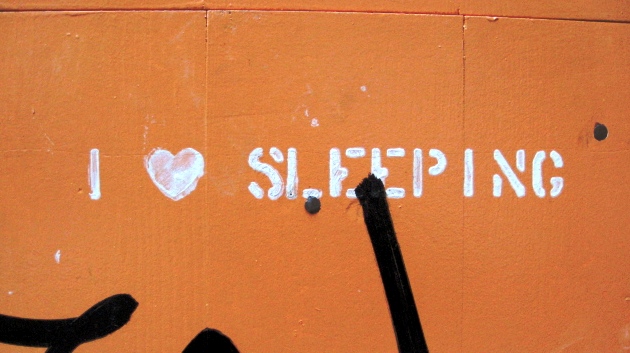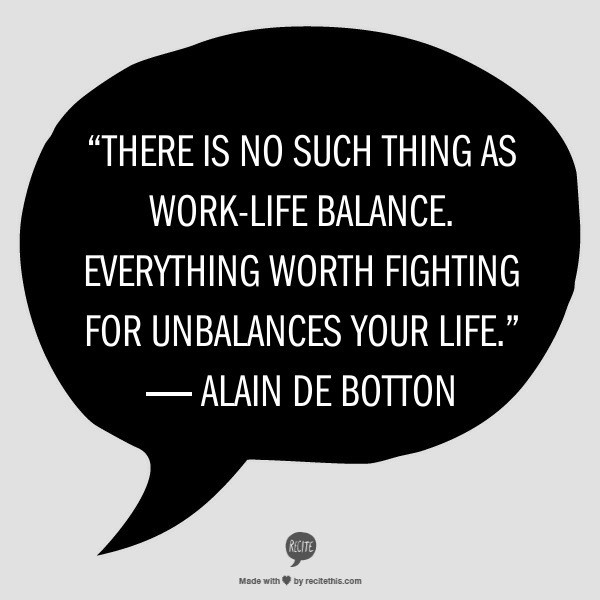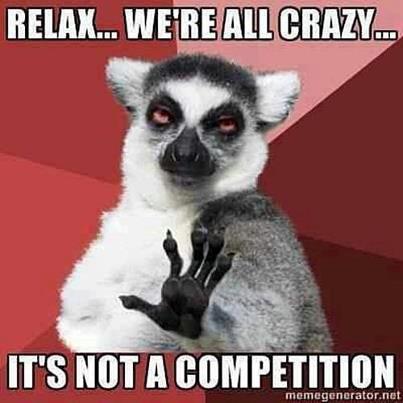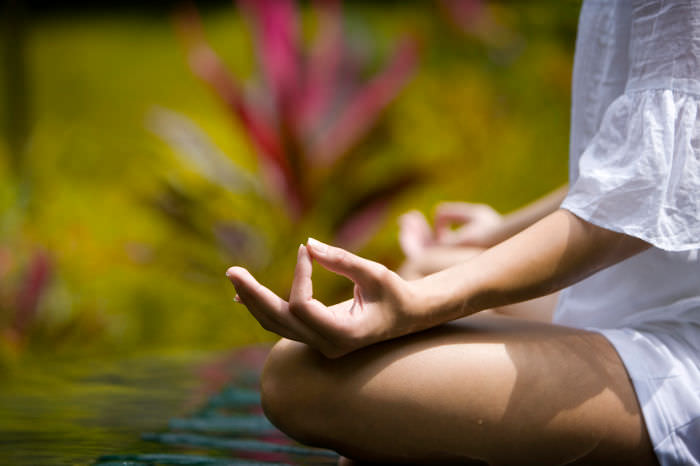
by Deirdre | Jun 21, 2013 | Mindful living
“A good laugh and a long sleep are the best cures in the doctor’s book.”
-Irish Proverb
I’m always surprised by how many people confess to sleep troubles when they hear I’m a health coach. If you feel that you’re the only one awake at 2 in the morning, I can assure you that you are not. You are pinpoint of restlessness in a galaxy of sleeplessness. Some of the other pinpoints are catching up on social media, some are reading, but a whole lot of them are worrying.
We’ve all heard the standard advice for what’s known as sleep hygiene. Go to bed early (really?), turn off all electronics by 8 (as if), avoid coffee and alcohol for six hours before bed (hunh?) The name alone is a bit of a horror. It’s not often that we talk about “hygiene” unless there’s some unpleasant, odorous reason to.
I always find it useful to understand “why” before I commit to making a change – what the science is behind the suggestions. I want to filter out the “in a perfect world” advice and get right to the “least effort possible” stuff. I like curling up with my iPad and a glass of wine to wind down and there better be a damn good reason why I would give that up.
How Does Sleep Work?
Sleep has it’s own rhythm throughout the night. There are five stages that cycle together in different combinations.
- Stage 1 of sleep is short and sweet – your muscle activity and eye movements slow down.
- Within 5 – 10 minutes you reach Stage 2, where body temperature drops, heart rate slows and your body prepares for deep sleep. Stage 2 is a gateway in and out of deeper stages of sleep. You spend about half of your sleep time in this stage.
- During stages 3 and 4 your body uses available human growth hormone to repair and do growth work.
- Stage 5 is the dream stage. Your body paralyzes your arm and leg muscles and then sorts through thoughts, memories, and knowledge and files them away.
A healthy person sleeping in a healthy location passes through five or six complete cycles lasting up to 90 minutes each. The earlier phases are deeper and longer. Your body uses these cycles to dispatch the hormones that restore and repair your cells. As the night progresses the cycles shorten and you start to dream more as your brain processes the mental activity of the day. This is when you get smarter.
The Rhythm of Sleep
There are two hormones – cortisol and melatonin – that work together in a rhythm to set the stage for sleep. In that imaginary perfect world, the times when one hormone is high, the other is low. Their levels cross over twice – at night to send you to bed and again in the morning to push you out. Cortisol, the action/stress hormone, peaks in the morning when melatonin has almost disappeared. This tells your brain to jump out of bed and get your day started. At the other end of the day, melatonin, the sleep hormone, rises as cortisol drops. When melatonin is higher in your system than cortisol your bed starts looking very appealing.
So what happens when this beautiful rhythm is interrupted by this thing we call “normal living”? The first step in approaching a problem is to understand what the problem is. You can try this quiz to see how your sleep might be disrupted. So many of us live with “disordered” sleep that we’ve forgotten what a good night’s sleep is like. This quiz will help you be clear on the different messages your sleep is sending you.
In a follow-up post I’ll cover a few scenarios of unsatisfying sleep and what they might mean. There’s a whole lot of information coded into when you fall asleep and when you wake up. The first step is to be mindful of where the problem lies.
Sweet dreams!
Posted by Deirdre Walsh
Image: I Love Sleeping by bixentro. Licensed under Creative Commons
If you enjoyed this post, please share it with your friends!

by Deirdre | May 10, 2013 | Mindful living
But of course there are all different kinds of freedom, and the kind that is most precious you will not hear much talk about much in the great outside world of wanting and achieving and displaying. The really important kind of freedom involves attention and awareness and discipline, and being able truly to care about other people and to sacrifice for them over and over in myriad petty, unsexy ways every day.
~~ This Is Water: Some Thoughts, Delivered on a Significant Occasion, about Living a Compassionate Life (2009)
Two ideas popped up this week that ended up being the same idea brought to life by two very different people. The message from both was simple and profound – peace and contentment are a moment’s choice away.
The first messenger was a bright, shiny, funny client – the best kind of girl that New Jersey can deliver. She’s got that sharp, sardonic kind of wit that signals a close proximity to Manhattan. We were catching up on life when she delivered her killer observation:
I realized that boring and peaceful are just a tiny shift in perspective away from each other.
Boom. Truth delivered in one wise sentence.
Those of us with restless minds and spirits can get caught up with the next new idea; how we’re going to do what we do, but better; or what untold possibilities lie just beyond what we know of our life right now. We secretly admire those who throw over their lives to follow their passions. But what we can miss out on is the beauty that exists in the moments that we’re rushing past.
This same idea, packaged in a very different format, also pinged me on Facebook. A video is circulating that captures the main thoughts of a commencement speech written by David Foster Wallace in 2005. In his speech Wallace, an American novelist, doesn’t lean on the promise of youth, energy or potential to prepare the students for life in the “real world”. Instead he offers the hope of a man who has struggled intimately with his mind.
Wallace talks about the tedium of living with the frustration and routine that makes up most of our lives. He makes it clear that he has lived the boredom, misery and darkness that our minds can default to if we’re not careful. (There’s a sense of the depth of his struggle in the entire speech that is not fully captured in the video. )
He makes the case to choose differently.
http://www.youtube.com/watch?feature=player_embedded&v=xmpYnxlEh0c
Now, this is some pretty advanced homework, so take it easy on yourself as you consider taking it on. It’s a case of retraining your brain to see the good in life, rather than seeing the muck. And your brain doesn’t want to be retrained, thank you very much.
As Wallace says, “It takes will and effort, and if you are like me, some days you won’t be able to do it, or you just flat out won’t want to.” But the patience and kindness you apply to this will start to lessen the loneliness and pain of those crummy moments in the hot, crowded line-ups.
Posted by Deirdre Walsh

by Deirdre | Apr 30, 2013 | Mindful living
I was talking to a small group about how to maintain balance in our lives. I tossed off the line “your balance is where you say it is” when they seemed concerned that they were somehow missing the mark. I was struck by how quickly faces relaxed, shoulders dropped and smiles emerged. They seemed to say “you mean I don’t have to be a different person?” and “I don’t have to have different goals?”
Balance, Like Beauty, is in the Eye of the Beholder
Some people thrive on work and don’t understand why the rest of us are such slackers. For others, the amount they need to work to maintain their lifestyle causes them to compromise what they consider a life. Some people refuse to be balanced. What they do instead is plan for burnout at the end of her big projects. Jonathan Fields, in his book Uncertainty, creates oases of rigid routine in his home life when he’s in the chaos of creating at work.
There have been a lot of words typed and ink spilled on this topic and many of them tiptoe very close to being judge-y. An epic amount of mental energy went into evaluating Sheryl Sandberg’s take on this subject. I appreciated that she sharing her wisdom on what it takes to get to the upper echelons of the corporate world but, frankly, it’s not a path most of us are on, male or female. What is fascinating is the amount of heat that this discussion can generate.
I sometimes wonder if people think that my regard for mindfulness means that I’m trying to push some kind of “unicorn dancing in the fields” version of work-life balance. Or that it’s a mark of your character when you’re calm, on time, fulfilled, engaged and charmingly available at all times. I assure you that I’m not.
Know When You’ve Hit Your Edge
You can ask anyone who knows me well – I am no poster child for balance, either in practice or belief. What I do firmly endorse is to know when you leave your own point of balance and start to lean on your stress crutches. And this is where the gift of mindfulness bears fruit. With a consistent-ish practice of mindfulness you start getting aware of the messages of stress. Maybe your sign is impatience or cravings, or maybe a tightness in your body, perhaps a change breathing patterns. My wake-up call is exactly that — I wake up with rapid breathing, already feeling the pressure of the day on me before I leave my bed.
Here are a few body messages that people have identified as their call for some serious TLC:
- Suddenly craving a lot of sweet things – or “needing” something sweet or mood-altering to get through
- Awake at 2 in the morning, worrying about the load of the next day
- Not being able to remember things from conversations, where you left things, why you went into that room
- A jump in worrying or feeling helpless to take action on the things that are troubling you
Quiet your mind for a minute. Check in with your body right now. What is it for you? What is your body trying to tell you about your life?
Posted by Deirdre Walsh

by Deirdre | Apr 2, 2013 | Mindful living
Relax . . . . we’re all crazy . . . . it’s not a competition
~~ an inspirational moment on Facebook
We’re all crazy sometimes. Stress does that to you. In my fantasy reality show, Dancing With The Stress, I lovingly call it “being on the crazy train.” Genetically speaking, and with a lifetime of stress-inducing choices and experiences under my belt, it’s not surprising that when I’m stressed my reaction to things can veer towards the “dramatic”.
The crazy train is your body’s way of talking back to you about the load you’re piling on it. First, you have the heady mix of expectations you heap on yourself. (You know what I mean.) That’s the engine that drives the train. I know that it’s not that you want to be Superwoman. But you care and want to share the goodness that’s come your way.
Then add in the physical stressors of being in too many places at once, with too many competing demands. It can be too much for our body and brain. They need to make us crazy to get us to pay attention! Or at least make us crazy enough that our loved ones will stage a stress intervention.
Being on the crazy train gets in the way of all the fun stuff of life
I’ve been on and off the crazy train since I started travelling a lot for work in my early ‘30s. Of course, I didn’t recognize it as the crazy train. I thought it was a normal response to working 70 hours a week. Honestly, self-care in those days meant grabbing some fast-food instead of starving.
I like to think the crazy train has seven stops. Why seven? Don’t know. I just like that you’ve got four stops to get off before you’re well on your way to crazy town.
The crafty thing about the crazy train is that you’re not sure you’re on it until you’re nearing the end of the line. It took me until I was way cray-cray (as my daughter says) for the penny to drop – something about convulsing in sobs to a friend because I didn’t have cookies to bring to a party.
Making all seven stops to crazy town for me means melting down at the slightest thing. It’s being sensitive to sound. It’s being really in tune with the voice of fear in my head. It’s taking a small thing – and I mean small – and projecting out how it can singlehandedly destroy my life.
Oh, and don’t think it’s only women who ride the crazy train. I heard a story about a senior manager – a male – who was working such insane hours for so long that he developed a very strong territorial attachment to his office copier and sent threatening emails to co-workers if they were thinking about using it. That’s way cray-cray.
Staying off the crazy train means recognizing when you’re on the crazy train
My reality check that I’m too far along on the crazy train is that look in a girlfriend’s eye when I’m telling her about the latest complication in my life. That look where she’s questioning my sanity and slowly backing away – in a loving, kindly way of course.
As I’ve gotten attuned to the signs at each of the stops of the crazy train I can ring the bell and exit the train faster. When I sense the symptoms – anxiety, restlessness, worry – I know they have more to do with my stress levels than they do with reality. Mindful practices have helped to raise my awareness and then I can get into action with sleep, diet and exercise. I call them the four pillars of stress resiliency – I’ve written about them here.
Posted by Deirdre Walsh
If you enjoyed this post, please share it with your friends!

by Deirdre | Mar 7, 2013 | Inspired Living, Mindful living
A very good friend who has known me through many an up and down was over for dinner last weekend with her husband. We’re at a new stage — our kids go out for dinner without us, leaving us to fend for ourselves. This is a very different scenario from the days we started connecting over hot dogs and plastic plates. They brought over a bottle of Dom Perignon to celebrate our sort-of freedom. (I have to admit that it really made my week to be considered – to paraphrase Elaine from Seinfeld – Dom-worthy.)
She wanted to know what I’d been doing, health-wise, for the last while. She said she’s noticed a gradual, but consistent, improvement in my energy, weight, skin, and overall love of life. I couldn’t point to any one thing. It’s been doing hundreds of little things that have worked together.
I’ve learned an awful lot about what health really is since doing my training at Duke Integrative Medicine. I had a short bout with chronic fatigue a couple of years ago that made it all very personal. I’ve come to appreciate how much your body can really heal itself if you give it time and space. And it was really, really helpful to change how my body reacts to stress.
When I look at the habits that have made the biggest difference it comes down to four pillars of resilience:
- the type of exercise I choose
- working with how I put myself to sleep
- and, most effective of all, practicing different ways of mindfulness
Nourishment
One of the first things I did was look at how my patterns of eating were causing stress on my body. Was I doing a mini-starve during the day? Our bodies love regular meals. I learned how to balance the macronutrients in each meal and snack so that I wouldn’t cause an insulin spike. When your insulin levels go off they pull all your other hormones off kilter with them, causing a host of annoying side-effects.
I put sugar on a strict budget. I don’t like cutting things out entirely because I need at least the illusion of freedom. But having a sugar budget made me start really savoring my sweet indulgences.
I experimented with the possibility of food sensitivities by going on an elimination diet for a few weeks. I found I wasn’t really allergic to anything, but that processed carbs do add a certain pudginess that can’t be explained only by calories.
Being mindful about what my body was asking for gave me a lot of insight into stress. I know the stress hormones in my body are rising when I really feel like I deserve something sweet or a glass of wine. There’s a momentary belief that pops up that eating or drinking something will give me enough of a lift to make it through.
Things like sugar and alcohol make your body work overtime to heal from their effects. When that little voice is coaxing me I consciously choose foods that help my body heal – fruits and veggies full of anti-oxidants, or protein rich foods. I also worked with a couple of really great naturopaths who helped me find supplements that added to my energy and gave me a little more nutritional oomph.
I resisted mindful eating for a long time. But that changed when I realized it wasn’t about restricting how I ate. Instead I’ve added gratitude to my diet, with a pinch of breathing room, and finished with a soupcon of kindness. I put my fork and knife down after each bite and think about how I’m enjoying my food and my family. I try to use the daily routine of feeding a family as a guidepost for creativity. Sometimes I’m Matisse with a knife and other days it’s like painting on velvet.
Intentional Exercise
My biggest aha came from reading Spark by John Ratey. I knew exercise was important, but didn’t understand that exercise is the most powerful medicine we can take. Food is medicine but exercise really, really is medicine.
The more I read, the more I realized that you can change your body’s physiology by the kind of exercise you choose. Aerobic exercise is excellent to rebuild our brains because it stimulates a host of chemicals that act like fertilizer to rebuild our neurons. Interval and strength training increase our muscle mass and make us younger by stimulating human growth hormone and testosterone. Yoga balances our neurotransmitters and has a wonderful effect on our moods and anxiety.
In the early stages of recovering from burnout it was critical to rest and restore my adrenal glands and rebuild the way my body used energy. But over time something shifted and I didn’t notice. My body went from being burned out to being deconditioned. The symptoms are very similar – the main one is energy crashing after exercise. I found invaluable advice from Phil Maffetone in the Big Book of Health and Fitness and embarked on a six-month re-conditioning program. I admire my friends who do bootcamps, races and other amazing feats of strength and stamina. I hope to join them again when I’ve put in the slow, steady progress on the elliptical.
Restorative Sleep
During the worst of my burnout phase I would almost dread settling in for the night as I was almost guaranteed to be awake again a few hours later. The more I talk to women, the more I find this is a very common experience. It’s a drag the next day when you’re dragging yourself through the day, but what you’re really missing out on is the time to rebalance your hormonal levels to set you up for the next day.
The key to getting restorative sleep is to mimic the natural patterns of nature as much as possible. I try to shut down my computer and start turning off the extra lights at about 9. I sleep in total darkness with as few clothes as possible. I go to bed at 10, if I can. I try to be as relaxed and mellow as I can when I cozy into bed. These are all things that we can’t possibly fit in, but it’s good for us if we try.
Mindfulness
Mindfulness is really what changed my life. Mindfulness is many things, but the biggest difference for me was learning not to fight what was going on and to accept things as they were. This seemed like defeat at the beginning, but I began to see how I could conserve energy by not fighting reality. Then things had a chance to change – and they did.
I was at an amazing conference where Jon Kabat-Zinn, one of the early champions of mindfulness, said: “Everything that rises in your awareness is the curriculum.” I started to shift my reaction to the day’s events towards kindness, self-compassion, gratitude and right action. Some days better than others. Some minutes are better than others.
But in the end it was better, and healthier, than treating those events with bitterness, anger, resentment and blame. Each time I practice I get a little better at it and it gets a little easier the next time.
Posted by Deirdre Walsh,
Image: iStockphoto.
If you enjoyed this post, please share it with your friends!

by Deirdre | Dec 17, 2012 | Mindful living
I was invited to a video chat by a lovely coach from New Zealand, Zivana Anderson of Soul River Coaching. She is a gorgeous soul who coaches sexy funny quirky goddesses who wonder what lies beyond the day-to-day hamster wheel. We talked about mindfulness and self-care during Christmas, particularly how to handle emotional eating.
If you struggle with emotional eating, particularly over Christmas, here’s a grab bag of tips, ideas, suggestions, and things to ponder to help you guide yourself through Christmas without a food hangover. Pick and choose ones that appeal to you:
- Try to make yourself first in your life. You can change this at other times of the year, but put more priority on yourself for just a few weeks.
- Try to connect with your body – music, download some guided imagery – and ground into your senses to get out of your head.
- Punctuate the days with rest periods – cups of tea or small breaks. Lie down in the middle of the day if you can. It’s very beneficial for the adrenals.
- Don’t diet! Eat as regularly during the day as you can.
- Think about shifting the meals you can control to low carb alternatives – avoid pasta, breads, etc. when you have the choice.
- Have lots of sparkling water on hand – hydrate, hydrate, hydrate.
- Watch how much alcohol you drink, because it makes you drop your defenses, it has calories, and it screws up your sleep – shifting your hormonal factory.
- Think back to trigger times for yourself. What was happening, who was there, what kind of mental and emotional state were you in. Write down a plan for dealing with similar situations.
- Write down your negative thoughts about emotional eating over the holidays and throw them out in the garbage. Things like: I can’t control my eating, I’m no good at this.
- Write down your positive thoughts about eating over the holidays: “When I’m rested I can manage what I eat.” Put those in your purse or wallet and carry them with you over the holidays.
- Enjoy being with family and friends. Stay as long as you’re having a lovely time. Leave when the time the energy is still harmonious. Make the connection your nourishment.
- Try as best as you can to get to bed at the same time every day. Winter is a time of rest for the body. Try to sleep a little bit more than usual.
Wishing you every blessing for a lovely holiday.
Posted by Deirdre Walsh
Image: Star Mince Tarts by Christmas Stock Images. Licensed under Creative Commons






